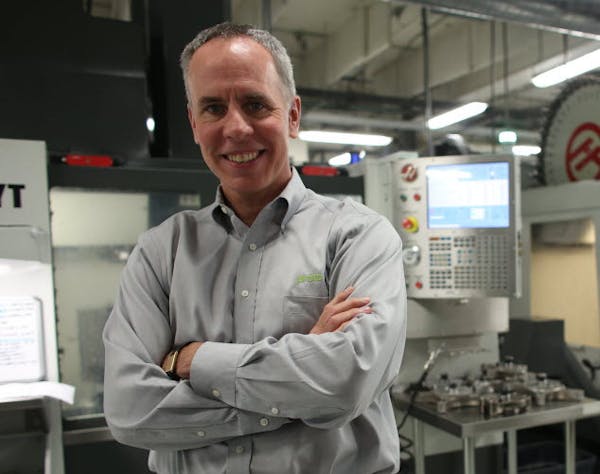Economic Development
Greater MSP touts job gains, talent challenge
The Minneapolis St. Paul Regional Economic Development Partnership, better known as Greater MSP, has exceeded by 29,900 jobs its five-year goal of adding 100,000 jobs since its 2012 inception as the Twin Cities regional economic development agency, established to recruit new businesses and expansion and coordinate related efforts among local governments.
Greater MSP, with revenue last year of $5.6 million funded mostly by the private sector, is the manifestation of an Itasca Project study that found too much rivalry among local governments and economic development agencies over attracting and retaining business. There is still some of that. But the case can be made that Greater MSP CEO Michael Langley and company have mitigated local hostilities somewhat and enhanced growth during the economic upturn.
Greater MSP said it also had a big hand in attracting $3.2 billion in capital investment from the likes of Amazon and other companies that have moved or expanded operations in the region. The latest MSP handiwork includes:
• A collaboration among the cities of Minneapolis and St. Paul, and Hennepin and Ramsey counties and their respective chambers of commerce that seeks to accelerate investment and jobs in the core-city areas.
• A medical-manufacturing partnership that supports Mankato, St. Cloud and the Twin Cities in pitches to employers as well as coordinated bids and strategy in pursuit of federal incentives.
Increasingly, as the Twin Cities approaches virtual full employment, the emphasis must turn to attracting talent, as well as programs that upgrade the skills of the unemployed and undereducated. A lot of businesses, schools and nonprofit-training outfits are working on that.
Greater MSP launched "Make It. MSP," last year to attract more technology and other skilled workers to fill some of the thousands of local open jobs. Greater MSP collaborated with fast-growing job creators such as Leadpages and Code 42, as well as the local Fortune 500 companies, to offer free flights to talented job prospects in September, during "Twin Cities Startup Week."
This was part of the pitch from Greater MSP: With more than 50,000 available jobs posted at the website makeitmsp.org and housing costs significantly lower than San Francisco, Bloomberg recently named Minneapolis-St. Paul as one of the "few places where you can get a job and afford a house."
Greater MSP also has touted CNBC's naming of Minnesota last year as the "top state for business."
Neal St. Anthony
Executive Compensation
Weaver tops pay list for local business orgs
Elsewhere in today's business section, staff writer Patrick Kennedy reviews the state of the Minnesota nonprofit economy, which accounts for about 10 percent of economic output. The report includes the compensation of top executives in health care, private colleges and charities.
Here is the compensation last year of the CEOs of several of the top-paid nonprofit business organizations.
The top-paid local business association executive was CEO Charlie Weaver of the Minnesota Business Partnership, who made $722,344 running the lobby for the state's 100 largest companies.
CEO Michael Langley of Greater MSP earned $515,631, plus a one-time $299,062 distribution of deferred compensation.
CEO Matt Kramer of the St. Paul Area Chamber of Commerce was paid $296,986. Steve Cramer, who runs the Minneapolis Downtown Council, earned $216,810.
The Minnesota Chamber and the Minneapolis Regional Chamber were run by interim executives who replaced leaders who died.
And no local can hold a candle to former Minnesota Gov. Tim Pawlenty, who earned $2.5 million running the Financial Services Roundtable, one of the nation's biggest business lobbies.
Neal St. Anthony
Business Expansion
New 'warehouse district' takes shape
Downtown Minneapolis and the Warehouse District, now dubbed the "North Loop" as it has transitioned to a technology-marketing-residential hub, have boomed in recent years thanks to new and expanding small-to-large companies.
They include Värde Partners, an investment firm; ECMC Group, a loan servicer; Select Comfort; Arctic Cat; and United Properties. The firms sought a central location, transit options and loop amenities.
A lot of industrial growth, meanwhile, has occurred in outer-ring areas that boast highway connections and huge warehouses.
Last week, Wagner SprayTech, which makes paint applicators, opened a 212,000 square-foot warehouse and distribution center in Otsego, Minn. Wagner, which expects to employ up to 60 in the $15 million facility, outgrew its distribution center in Brooklyn Park. The 13-acre property boasts a warehouse with 36-foot high ceilings, dock space for up to 15 trucks, five acres of prairie grass and expansion space.
The northwest suburbs, such as Brooklyn Park and Otsego, are the new "warehouse district."
Neal St. Anthony
